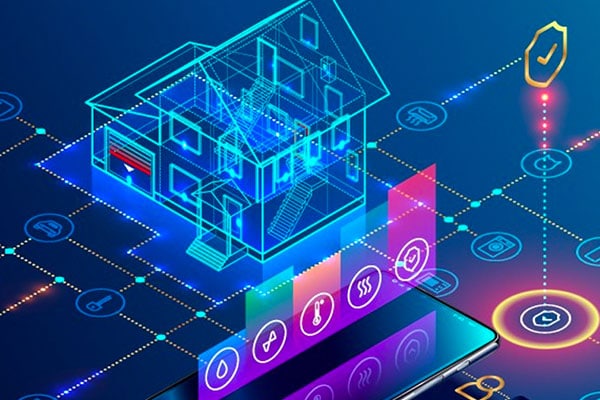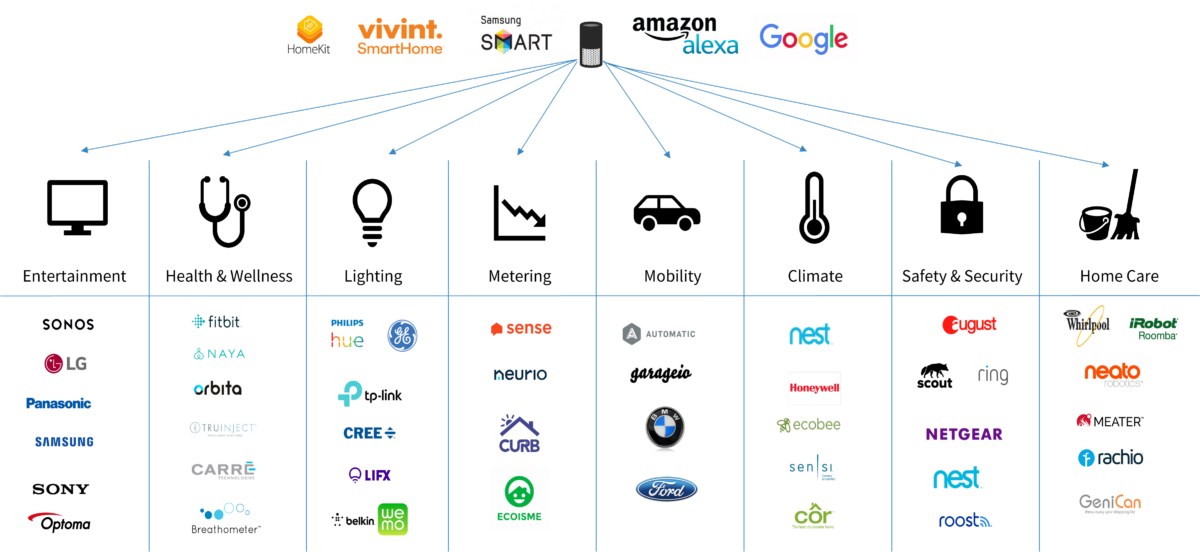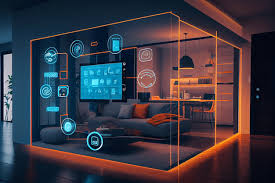A smart home ecosystem is a network of smart devices working together. These devices communicate to make your home more efficient and convenient.
Imagine lights that turn on when you enter a room or a thermostat that adjusts to your comfort. A smart home ecosystem connects all these devices, allowing them to interact. This means your home can learn your habits and preferences, making daily life smoother.
From security cameras to smart speakers, each device plays a role. Understanding this ecosystem helps you create a home that responds to your needs. Dive in to discover how smart home technology can transform your living space into a seamless, connected environment.

Credit: easternpeak.com
Introduction To Smart Home Ecosystems
A smart home ecosystem connects different devices in your home. These devices include lights, thermostats, and security cameras. They work together to make life easier and more convenient. They can be controlled from your phone.
Smart home systems offer many benefits. They save time and energy. They can lower your electricity bills. They also improve safety and security. You can monitor your home from anywhere. Peace of mind.

Credit: www.emcsecurity.com
Core Components
A smart home ecosystem includes interconnected devices like lights, thermostats, and security cameras. These components work together to automate and enhance daily living.
Smart Devices
Smart devices make homes more efficient. These devices include smart lights, thermostats, and security cameras. They can be controlled by a smartphone or voice. Smart devices work together to enhance comfort and safety.
Connectivity And Networks
Connectivity is key for a smart home. Devices connect through Wi-Fi, Bluetooth, or Zigbee. A strong network ensures devices work smoothly. This connection allows devices to communicate and respond quickly.
Key Technologies
Smart homes use Internet of Things (IoT). IoT connects devices to the internet. This lets them communicate with each other. Devices like smart lights, thermostats, and cameras can be controlled remotely. This makes your home more efficient and convenient. For example, you can turn off lights from your phone. You can adjust the thermostat without getting up.
Artificial Intelligence (AI) helps in smart homes. AI can learn your habits. It can predict your needs. For example, it can adjust the temperature based on your routine. AI can also control devices using voice commands. This makes your home more comfortable. AI can even detect problems early. This helps in preventing bigger issues.
Popular Smart Home Systems
Google Home helps you control your home. Use voice commands to manage lights, thermostats, and more. It’s easy to set up. Connect it to other smart devices. It’s compatible with many brands. Google Home can play music and answer questions. Enjoy a smarter home life.
Amazon Alexa is a popular smart home assistant. It listens and responds to your voice. Control lights, locks, and other devices with Alexa. It works with many smart home products. Alexa can also play music, set timers, and give weather updates. Simple to use. Makes your home smarter.
Benefits Of Smart Homes
Smart homes offer great convenience. You can control devices with your voice. Imagine turning off lights without getting up. It saves time and effort. Smart homes can also make your life more efficient. Devices can work together. For example, your coffee maker starts when your alarm goes off. This makes mornings easier.
Smart homes help save energy. Devices can turn off automatically when not in use. This reduces electricity bills. Smart thermostats adjust the temperature based on your habits. They keep your home comfortable and save energy. Smart lighting systems also help. They can dim lights when you are not home. This helps in using less power.
Challenges And Concerns
Smart homes collect a lot of data. This data can be personal. It includes your daily habits. Privacy can become a concern. Companies collect and store this data. It may be at risk. Hackers can access this data. They can misuse it. Keeping your data private is hard. You must trust the company. They must use strong security measures.
Smart homes connect many devices. These devices need the internet. Hackers can target them. They can control your devices. This can be dangerous. Imagine someone unlocking your door. Or turning off your security system. Passwords and encryption help protect you. Always update your devices. Use strong passwords. Be aware of these risks.
Future Trends
Smart homes and wearables will work together. Your watch might control lights. Fitness trackers could adjust your thermostat. This makes daily life easier. Wearables will send data to smart home devices. They will create a seamless experience. This helps you stay comfortable and save energy. Home automation improves with this connection.
AI will make smart homes smarter. Devices will learn your habits. They will predict your needs. AI can improve security. It can recognize unusual activity. This keeps your home safe. AI can also help with energy management. It will find ways to save power. Smart homes will become more efficient. They will adapt to you.
Getting Started
Picking the right devices is key. Start with a smart hub. It controls other devices. Smart speakers like Alexa or Google Home are good choices. Next, look for smart lights. These can change color and brightness. Smart plugs can turn any device into a smart one. Choose devices that work together. This makes your life easier.
A strong network is important. Begin with a reliable router. Place it in the center of your home. This gives good coverage. Use Wi-Fi extenders if needed. Secure your network with a strong password. Connect your devices one by one. Test each device after connecting. Make sure they work properly.

Credit: harborresearch.com
Frequently Asked Questions
What Is A Smart Home Ecosystem?
A Smart Home Ecosystem is a network of interconnected devices. These devices communicate to automate and enhance home living. They provide convenience, security, and energy efficiency.
How Do Smart Home Devices Work Together?
Smart Home devices use wireless protocols like Wi-Fi, Zigbee, or Z-Wave. These protocols allow them to communicate and function together seamlessly. This integration simplifies control via a central hub or app.
What Are The Benefits Of A Smart Home Ecosystem?
A Smart Home Ecosystem offers convenience, security, and energy efficiency. It allows remote control of devices, automates tasks, and enhances home security. It can also reduce energy consumption through smart management.
Can Smart Home Ecosystems Save Energy?
Yes, Smart Home Ecosystems can save energy. They optimize the use of lighting, heating, and cooling systems. Smart devices monitor and adjust energy usage based on real-time data.
Conclusion
A smart home ecosystem makes life easier and more efficient. It connects devices for better control. Lights, locks, and thermostats work together. Voice assistants add convenience. Energy savings and security improve. Smart homes offer comfort and convenience. Embrace the future with smart technology.
Your home becomes smarter, and so do you.

